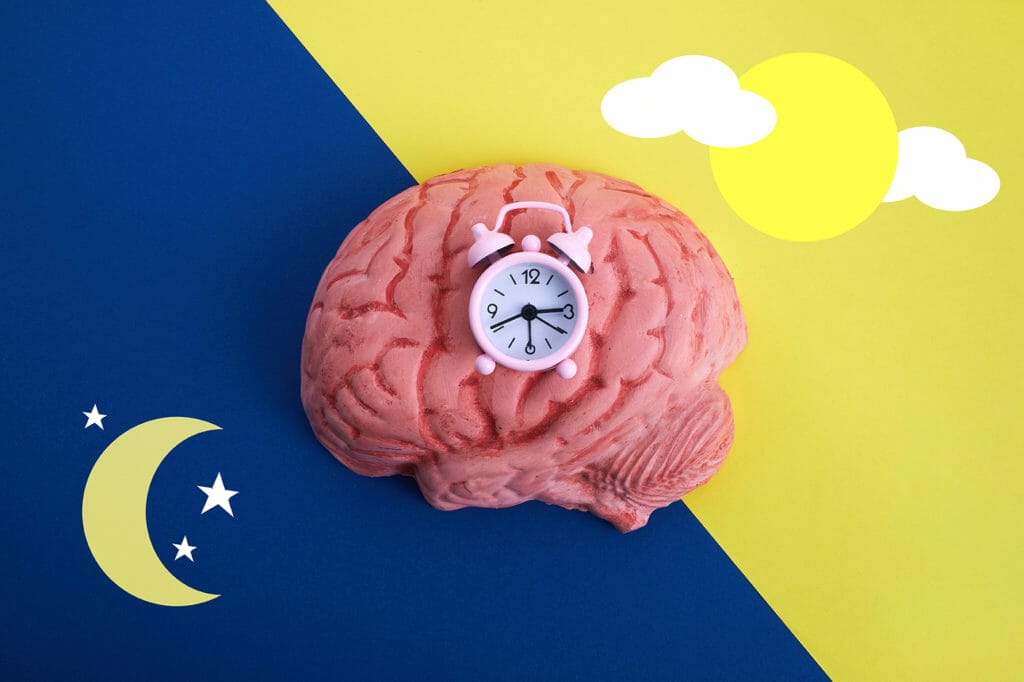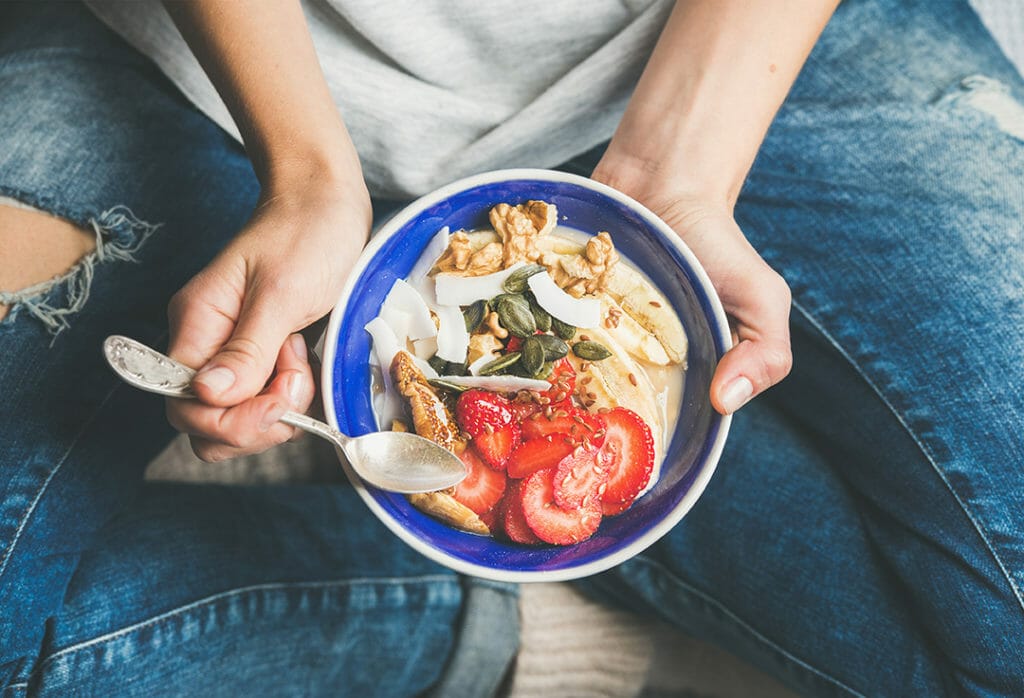Circadian rhythms and your body clock
Most of our physiological functions are governed by an untold number of carefully synchronised biological clocks that each complete one cycle about every 24 hours. Those cycles are known as circadian rhythms, after the Latin for “about” (circa) and “day” (dies).
Circadian rhythms, in other words, are relevant to more physiological events than just sleep. But few realised how relevant until 2014, when a professor of pharmacology at the University of Pennsylvania named John Hogenesch published a paper with his colleagues showing that almost half of the genes in mice produce proteins on a 24-hour schedule[5].
Western medicine has long been sceptical of studies that tout the health benefits of synchronising treatments with biological cycles as traditional Chinese and Ayurvedic medicine does in large part because there was no scientific explanation for the results. But as data continues to demonstrate that medicine, exercise, food and sleep are reactive to and with these rhythms their importance is becoming far greater.
In effect, the cells rely on a mixture of programmed ‘nostalgia and normal’ to perform their obligations, a change in the timing of which can result in significant changes in function, something that represents a nuance in systems biology that deserves more comprehension. Such internal misalignment, or dysregulation, can throw our physiology out of balance.
Understanding how the clocks in us work will enable us to control and improve our health, keeping us vigorous for longer. Now, they just tick relentlessly toward one end. Conceptually speaking, at least, if you could slow them down or pause them at will, it would be altering our relationship with time itself.

How do circadian rhythms work?
In brief, the circadian system comprises a coupled network of molecular/cellular- and tissue-level oscillators, hierarchically coordinated by the hypothalamic suprachiasmatic nuclear circadian pacemaker. The suprachiasmatic nucleus is wired directly to the retina, and in the 1980s, it was confirmed that the brain clock could be calibrated by sunlight or artificial light, which signals when it’s daytime. Receiving light consistently when you first wake up and waking up at the same time each day, can help keep the clock on track so that, in turn, you fall asleep at an optimal hour; it can also prevent a weakening of your circadian rhythms or a decrease in their amplitude.
This results in less contrast between an active phase and rest phase, which, in the case of sleep, can potentially translate into feeling more tired during the day and waking more often at night. Robust rhythms, however, require that the brain does not receive light signals at night. Some studies show that even while you’re sleeping, dim light can penetrate your closed eyelids and confuse the clock.
A publication in Sleep linked any night-time light exposure during sleep to a substantially increased risk of obesity, diabetes and hypertension in older adults[6].
How can I use it?
One of the great promises of circadian medicine is its D.I.Y. appeal: Establishing the optimal time to eat or exercise, for example, could change behaviour immediately, free of charge, not only to minimise the harm but also to maximise the health benefits of given activities. Professional athletes and their trainers, for instance, know that physical performance peaks in the late afternoon or early evening. (Most world records are broken in the evening.) In February 2022, Cell Metabolism published an “atlas of exercise metabolism” that showed how, for mice, the metabolic effects of running on mini-treadmills changed over 24 hours[7].
The implication is that by establishing the relationship between our clock genes and the genes governing metabolism and inflammation and modifying the workings of clock genes to speed up or slow down those processes throughout the body we may be able to prevent disease and thereby remain healthy into old age.
Personalised circadian medicine may be the future. The timing of our clocks varies by individual, set by the sun, indoor lighting, genetic predisposition, our behaviour, our age, and one another[8].
Researchers hope to develop a quick and easy method for telling what phase, or phases, your organs are in. But for now, absolute precision isn’t required to improve the coordination and strength of your biological rhythms. The primary recommendation is to expose yourself to as much sunlight as you can during your day, especially upon waking, dimming the lights before sleep and making your bedroom really dark, exercising and eating at a time that is consistent and relevant to health.

When to Eat?
Look to ingest most of your calories earlier in the day. Most of all, try to keep your schedule consistent across the week, including weekends.
Metabolism isn’t just about the digestion of food. It’s also about how all our cells use energy to perform the tasks required to keep us alive and functioning. The more efficiently they can do that while simultaneously replicating and repairing themselves the better off we tend to be.
Food it seems can unsynchronise the clock in your head from the clocks in your body and when they’re not communicating well with each other, optimal responses from the body are not achieved. Food overrides the clocks in all of our peripheral tissues. It does not directly affect the brain tissue. The brain keeps going with the sun, but the clocks in the body are actually more controlled by the food that we eat[9].
This circadian misalignment, due to mistimed eating, results in abnormal metabolic regulation/ homeostasis, and consequently, increased cardiometabolic risks, including the development of obesity, type 2 diabetes, and ultimately CVD[10].
An idea popularised by the work of Prof Satchin Panda author of the Circadian Code who as a consequence has recommended the application of time-restricted feeding as well as light, exercise and sleep to improve metabolic health seeks to hack this process for the betterment of health[11].
For example, reviewing the most common of all metabolic disruptions as Journalist H.L. Mencken wrote “for every complex problem there is a solution that is clear, simple and wrong.” That observation aptly describes a prevailing attitude toward type 2 diabetes, which characterises diabetes as a problem that could clearly be fixed if people would simply move more and eat less.

Conclusion
Chronotherapy is gaining scientific understanding and clinical applications are emerging. But to conclude, one interesting study revealed how nostalgia serves a homeostatic function, allowing the mental simulation of previously enjoyed states, including states of bodily comfort; in this case, making us feel warmer or increasing our tolerance of cold, in effect changing the state of normal[12]. Another demonstrates how nostalgia can also mitigate pain[13].
Just think how we might liberate people constricted in choice, by a diminution of their expected normal, by utilising nostalgia as well as the other approaches to optimise circadian outcomes.
References
[1] Koeslag JH. “What is Normal?” South African. Med J. 1993;83(1):47–50 50
[2] Catita, M., Águas, A. & Morgado, P. Normality in medicine: a critical review. Philos Ethics Humanit Med 15, 3 (2020).
[3] Rudnick A. The ends of medical intervention and the demarcation of the Normal from the pathological. J Med Philos. 2000;25(5):569–80
[4] Araújo J, Cai J, Stevens J. Prevalence of Optimal Metabolic Health in American Adults: National Health and Nutrition Examination Survey 2009-2016. Metab Syndr Relat Disord. 2019 Feb;17(1):46-52.
[5] Zhang R, Lahens NF, Ballance HI, Hughes ME, Hogenesch JB. A circadian gene expression atlas in mammals: implications for biology and medicine. Proc Natl Acad Sci U S A. 2014 Nov 11;111(45):16219-24.
[6] Kim M, Vu TH, Maas MB, Braun RI, Wolf MS, Roenneberg T, Daviglus ML, Reid KJ, Zee PC. Light at night in older age is associated with obesity, diabetes, and hypertension. Sleep. 2022 Jun 22:zsac130..
[7] Sato S, Dyar KA, Treebak JT, Jepsen SL, Ehrlich AM, Ashcroft SP, Trost K, Kunzke T, Prade VM, Small L, Basse AL, Schönke M, Chen S, Samad M, Baldi P, Barrès R, Walch A, Moritz T, Holst JJ, Lutter D, Zierath JR, Sassone-Corsi P. Atlas of exercise metabolism reveals time-dependent signatures of metabolic homeostasis. Cell Metab. 2022 Feb 1;34(2):329-345.e8.
[8] Greco CM, Sassone-Corsi P. Personalized medicine and circadian rhythms: Opportunities for modern society. J Exp Med. 2020 Jun 1;217(6):e20200702..
[9] Katsi V, Papakonstantinou IP, Soulaidopoulos S, Katsiki N, Tsioufis K. Chrononutrition in Cardiometabolic Health. J Clin Med. 2022 Jan 7;11(2):296.
[10] Mason IC, Qian J, Adler GK, Scheer FAJL. Impact of circadian disruption on glucose metabolism: implications for type 2 diabetes. Diabetologia. 2020 Mar;63(3):462-472. doi: 10.1007/s00125-019-05059-6. Epub 2020 Jan 8. PMID: 31915891; PMCID: PMC7002226.
[11] Crose A, Alvear A, Singroy S, Wang Q, Manoogian E, Panda S, Mashek DG, Chow LS. Time-Restricted Eating Improves Quality of Life Measures in Overweight Humans. Nutrients. 2021 Apr 23;13(5):1430.
[12] Zhou X, Wildschut T, Sedikides C, Chen X, Vingerhoets AJ. Heartwarming memories: Nostalgia maintains physiological comfort. Emotion. 2012 Aug;12(4):678-84.
[13] Kersten M, Swets JA, Cox CR, Kusumi T, Nishihata K, Watanabe T. Attenuating Pain With the Past: Nostalgia Reduces Physical Pain. Front Psychol. 2020 Oct 13;11:572881..



